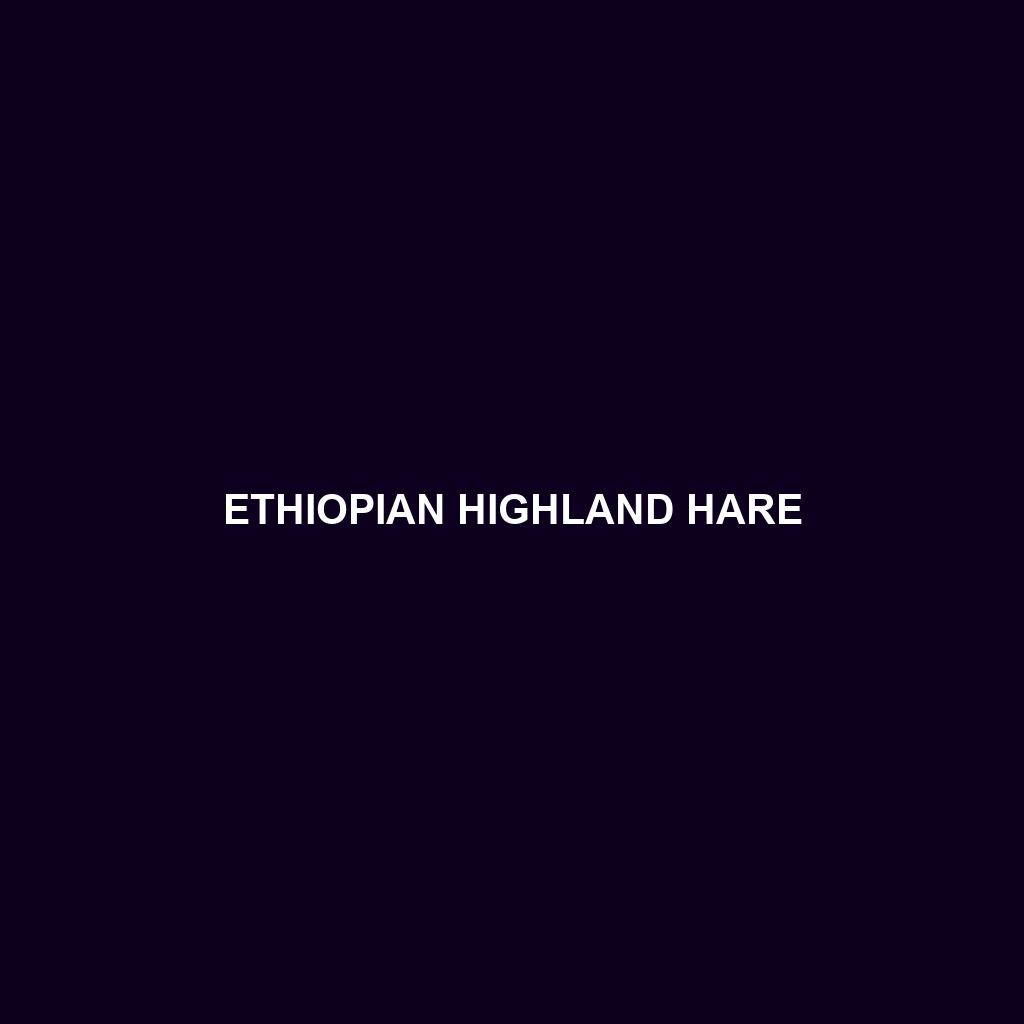Ethiopian Highland Hare
Common Name: Ethiopian Highland Hare
Scientific Name: Lepus fagani
Habitat
The Ethiopian Highland Hare is primarily found in the high-altitude regions of Ethiopia. It inhabits mountainous areas, particularly the Bale Mountains and Simien Mountains, where it thrives in alpine meadows and moist grasslands. This hare is adapted to live in cold climate zones, often at elevations exceeding 3,500 meters (11,500 feet), where the dense vegetation provides cover and food.
Physical Characteristics
This species is characterized by its medium size, typically measuring about 45-60 cm (17-24 inches) in length. The Ethiopian Highland Hare displays a distinctive light brown or greyish coat, providing effective camouflage against the rocky terrains of its habitat. Its long ears and large hind legs enable it to detect predators and make quick escapes, while its short tail is a typical feature of hares. Notably, the Ethiopian Highland Hare has a smaller body compared to other hare species, which is suited to its cooler environment.
Behavior
The Ethiopian Highland Hare is primarily crepuscular, being most active during the dawn and dusk hours. It is known for its solitary nature; however, it may be seen in small groups during favorable conditions. This hare exhibits unique behaviors such as digging shallow burrows or using rock crevices for shelter. Its agile movements and powerful legs allow it to make quick, bounding leaps to evade potential threats, making it a fascinating subject for wildlife enthusiasts.
Diet
The diet of the Ethiopian Highland Hare consists mainly of grasses, herbs, and shrubs. It is an herbivore and primarily forages on the various plant species available in its mountainous habitat. The hare’s feeding habits play a crucial role in maintaining the ecological balance by preventing overgrowth of certain vegetation and promoting diversity in plant life.
Reproduction
This species breeds during the warmer months, typically from June to September. The female Ethiopian Highland Hare gives birth to 2-4 young after a gestation period of about 40-45 days. The offspring are born fully furred and with open eyes, allowing them to join their mother shortly after birth. Notably, the mother hides her young in vegetation to protect them from predators.
Conservation Status
The Ethiopian Highland Hare is currently classified as Vulnerable on the IUCN Red List. The primary threats to its population include habitat destruction due to agricultural expansion and climate change. Conservation efforts are needed to ensure its survival and to protect its natural habitat.
Interesting Facts
The Ethiopian Highland Hare is endemic to Ethiopia, meaning it is not found naturally anywhere else in the world. This unique hare has developed specific adaptations to cope with its high-altitude environment, including a thicker fur coat to withstand cold temperatures, making it a remarkable example of evolutionary specialization.
Role in Ecosystem
The Ethiopian Highland Hare plays a significant role in its ecosystem as a herbivore. By grazing on various plants, it helps control vegetation growth, which in turn supports a healthy balance within the habitat. Additionally, its presence provides a food source for native predators, thus contributing to the overall biodiversity of its mountainous environment.
